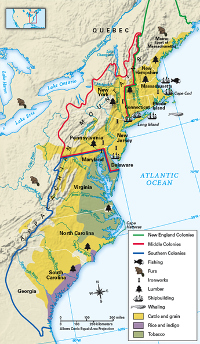The Confederate States of America
The Confederate States of America was an organization of 11 Southern American states that existed for four years during the American Civil War. The Confederacy began with a declaration of secession and ended with its members rejoining the Union. The North and South had begun as allies, united against the oppressor England and needing to stick together in order to win both the Revolutionary War and the War of 1812. But once war with England was no longer a likelihood, Americans were free to go about their business–carving out new lives for themselves in their ancestral homes or as part of a growing number of waves who traveled west in search of a new life and fortune. 
Farming was a way of life for most of America's earliest colonists. As more and more people worked the land and looked for new places to settle, more and more industry grew. North and South were alike in one respect: they both had powerful economies. The Northern economy, as it grew, ran on the back of the engines of progress and finance. The New England Colonies were largely farming and fishing communities. The people made their own clothes and shoes. They grew much of their own food. Crops like corn and wheat grew in large numbers, and much was shipped to England. Foods that didn't grow in America were shipped from England. Boston was the major New England port. The Middle Colonies were part agriculture, part industrial. Wheat and other grains grew on farms in Pennsylvania and New York. Factories in Maryland produced iron, and factories in Pennsylvania produced paper and textiles. Trade with England was plentiful in these colonies as well. By contrast, the Southern economy ran on the back of the field and the plantation. Southern plantations grew tobacco, rice, and indigo, which they sold to buyers in England and elsewhere in America. 
One key difference between North and South was in the freedom of those doing the work. It was in the Northern colonies that manufacturing became more of a dominant way of life; while the Southern colonies continued to depend on agrarian interests, modernizing as the times allowed. This economic split became more pronounced as the new nation acquired new territories and employed new means of travel and transportation. Most of the financial centers of the country were in northern cities and states. Shipbuilding enterprises dotted the coasts from north to south. Manufacturing certainly existed in Southern cities and states, but it was the farms and fields and plantations that powered the Southern economy and the mills and factories that powered the Northern economy. The largest part of the Southern labor force was African slaves. Next page > Compromise and Compromise Again > Page 1, 2, 3, 4, 5 |
|
Social Studies for Kids
copyright 2002–2025
David White




